 Grateful not to have ended up on someone's dinner table! Grateful not to have ended up on someone's dinner table! I know. Thanksgiving was last week. But let's carry that spirit forward for awhile. Here are some thoughts about gratitude to keep us in that frame of mind. Gratitude can transform common days into thanksgivings, turn routine jobs into joy, and change ordinary opportunities into blessings. -- William Arthur Ward As we express our gratitude, we must never forget that the highest appreciation is not to utter words, but to live by them. -- John F. Kennedy, November 5, 1963 Gratitude unlocks the fullness of life. It turns what we have into enough, and more. It turns denial into acceptance, chaos to order, confusion to clarity. It can turn a meal into a feast, a house into a home, a stranger into a friend. -- Melodie Beattie At times our own light goes out and is rekindled by a spark from another person. Each of us has cause to think with deep gratitude of those who have lighted the flame within us. -- Albert Schweitzer Gratitude is not only the greatest of virtues, but the parent of all the others. -- Marcus Tullius Cicero "Thank you" is the best prayer that anyone could say. I say that one a lot. Thank you expresses extreme gratitude, humility, understanding. -- Alice Walker Gratitude bestows reverence, allowing us to encounter everyday epiphanies, those transcendent moments of awe that change forever how we experience life . . . and the world. -- Sarah Ban Breathnach, Simple Abundance Journal of Gratitude I write about the power of trying, because I want to be okay with failing. I write about generosity because I battle selfishness. I write about joy because I know sorrow. I write about faith because I almost lost mine, and I know what it is to be broken and in need of redemption. I write about gratitude because I am thankful - for all of it. -- Kristin Armstrong One looks back with appreciation to the brilliant teachers, but with gratitude to those who touched our human feelings. -- Carl Jung What are you grateful for today?
11 Comments
 I scout the winners and finalists lists for to-read suggestions I scout the winners and finalists lists for to-read suggestions The 2017 National Book Awards were announced last week, and while I'm always interested in checking out the winners and finalists for additions to my To-Read list, I paid more attention than usual this year. That's because I was rooting for one particular book on the nonfiction finalist list: David Grann's Killers of the Flower Moon: The Osage Murders and the Birth of the FBI.  This book was the topic of many conversations in Oklahoma This book was the topic of many conversations in Oklahoma Although Grann's book didn't win in its category, its selection as one of five finalists speaks to the story's significance and the skill with which Grann researched and wrote it. That's reason enough to take note, but there was also this: Killers of the Flower Moon is the book everyone was talking about on our recent visit to Oklahoma. Cousins, classmates, complete strangers—all had read or were reading or were about to read the book and wanted to talk about it. Having just read it ourselves, and still feeling stunned by the story, Ray and I wanted to talk about it, too. In fact, we wanted to do more than talk, so while in Oklahoma, we made a pilgrimage of sorts to Pawhuska, the town where many of the events described in the book took place. More about that in a moment. To bring you up to speed if you haven't read the book, it's the true story of a series of murders of wealthy members of the Osage tribe in the 1920s. Forced onto seemingly worthless land in northern Oklahoma, the Osage had the foresight to secure collective mineral rights to the property, which turned out to be rife with high-quality oil deposits. By leasing the drilling rights to oil companies, the Osage made a fortune—more than $30 million in 1923 alone. (That's the equivalent of more than $400 million today.) At the time, the Osage were, per capita, the richest people in the world. They built mansions, owned fancy cars, sent their children to prestigious schools—and attracted the attention of schemers intent on separating them from their money by any means necessary, including mercenary marriage and murder. Whole families turned up dead from mysterious illnesses, secretive shootings and suspicious fires, as did investigators sent to look into the killings. With more than two dozen people murdered between 1920 and 1924, the killing spree became known as the Osage Reign of Terror. Eventually, agents from the newly reorganized Federal Bureau of Investigation solved the murders. Grann details that investigation and its devastating revelations, then—with the help of Osage Nation members he met while researching the book—goes on to unearth a deeper conspiracy. As Dave Eggers wrote in his New York Times review of the book, "Among the towering thefts and crimes visited upon the native peoples of the continent, what was done to the Osage must rank among the most depraved and ignoble." Growing up in Oklahoma, I heard stories—both official and personal—about injustices and atrocities committed against indigenous people. In Oklahoma History classes, we learned about the Trail of Tears (as well as the accomplishments of such leaders as Sequoyah and Quanah Parker). Yet I never heard or read a thing about the Osage murders, though Pawhuska is only 80 miles from my hometown.  Osage Nation Museum, Pawhuska Osage Nation Museum, Pawhuska Apparently, neither did most Oklahomans—including some you might think would have been well aware. At the Osage Nation Museum in Pawhuska, I overheard a conversation between another visitor and guest services representative Pauline Allred, an 87-year-old Osage/Ponca woman. "I guess you grew up hearing about the murders," the visitor said. "No," Ms. Allred replied. "We knew something had happened, but no one would say what had happened."  Books in gallery window Books in gallery window Today, the horrific story is no longer kept quiet; copies of Grann's book are prominently displayed in the window of The Water Bird Gallery in downtown Pawhuska. A monument on a nearby hilltop marks the spot where the Million Dollar Elm once stood. In the shade of that tree, auctions for oil and gas leases were held in the 1920s, with such notable oilmen as J. Paul Getty, Harry Sinclair and Frank Phillips bidding the big bucks that brought prosperity—and eventually tragedy—to the Osage Nation. Steps away from the Million Dollar Elm monument, exhibits in the Osage Nation Museum document that awful chapter, but place it in the context of a long history and rich culture. When we visited, the museum was preparing to open an exhibit by renowned Osage artist and activist Gina Gray, whose distinctive style blends traditional images with contemporary style. The nearby Osage Nation Cultural Center offers classes in traditional skills such as fingerweaving, moccasin-making, beadwork and ribbonwork, and the Nation's language department is actively engaged in revitalizing the Osage language through classroom and online courses. Encouraging signs of the Nation's resilience. Yet we also saw signs that controversy continues today, once again involving energy production. Approaching Pawhuska from the west, we drove through a vast wind farm. In town, we saw placards reading "NO TURBINES." We learned that the Osage Nation has been fighting wind development in the area for years, asserting that the enormous turbines—located on privately-owned ranches to which the Osage still retain mineral rights—are a "scenic blight" on the prairie landscape, and that the wind developments could disturb graves and archaeological sites. "They're eating up the landscape," said one Osage man quoted in a 2015 Tulsa World article. "They're devouring our history and culture." Several years ago, the federal government, acting on behalf of the Osage Nation, sued the wind farm developers, arguing that the construction process interfered with the Nation's mineral rights. Turbine construction involves digging a large pit for the foundation, crushing the underlying rock and using the crushed rocks as structural support. Though not a typical mining operation, the removal and altering of rocks does constitute mining, government lawyers maintained, and should not be done without obtaining mineral permits from the Osage Nation. The initial court ruling came down in favor of the wind developers. But the Osage Mineral Council appealed, and while we were in Oklahoma, the original decision was reversed. For the wind farm already in operation, the developers must negotiate a new lease with the Osage Nation, and any future developments must have the Nation's consent. How the situation will play out remains to be seen, but whatever the outcome, it will be one more chapter in the compelling story of the Osage of Oklahoma.
 Vietnam veteran Mike O'Connor* Vietnam veteran Mike O'Connor* The bearded man with the gray ponytail sits at a table, alone and looking like he wants to keep it that way. When he speaks, it's to talk about a time in his youth when he decided "I should not befriend new people, because they're likely to die." Even now, he goes on to say, "I still don't get too close to many people." Flash forward to another scene. Same man, same beard and ponytail, tattoos visible on his forearms, but now he's prancing around in a red tutu over striped pants, sporting a red nose, a pink ball cap and an oversized, polka-dot tie and yukking it up with a gaggle of kids and a bunch of other burly guys who are just as outlandishly attired.  Mike in clown mode* Mike in clown mode* What accounts for the shift between scenes? The man in the red tutu is 71-year-old Vietnam veteran Mike O'Connor, who summoned a different kind of bravery to take part in an experiment in humanitarian clowning, traveling to Guatemala with a group of other veterans to spread smiles in hospitals and orphanages. In the process, he and the other Vets stepped out of the "suffer zone" into a more playful, loving space. Clownvets, a program of physician Patch Adams's Gesundheit! Institute, is the subject of a documentary film-in-progress, and in a bit I'll tell you how you can help the filmmakers finish, distribute and promote the film. 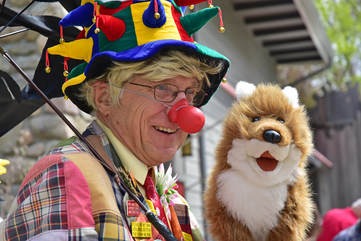 Mark Kane, AKA Marcos the Clown Mark Kane, AKA Marcos the Clown But first, a bit of background. I first heard about the Clownvets project from my neighbor Mark Kane, a licensed psychologist who has seen from his work with veterans how trauma affects the mind, body and spirit. In fact, it was Mark's exposure to Vietnam veterans as a conscientious objector working with the American Friends Service Committee years ago that prompted him to become a psychologist. "Post-traumatic stress, in a variety of names, has been with us since the beginning of time," says Mark. "It's not really a disease like polio is . . . It's normal people reacting normally to very un-normal circumstances." Statistics on the impact of post-traumatic stress disorder (PTSD) are sobering. In the U.S., more than twenty Veterans commit suicide daily. Many more experience physical and psychological symptoms that ripple out to affect their families and communities. As a step toward relieving some of that suffering, Adams and the Gesundheit! Institute came up with the idea of introducing Vets to humanitarian clowning.  Patch Adams* Patch Adams* Known for his work with warriors experiencing PTSD, Mark was asked to help recruit Vets for the Gesundheit! project. All he knew about Patch Adams at the time was that Robin Williams had depicted him in the eponymous 1998 movie, but Mark quickly learned more about the clowning physician and got onboard with the project. Getting Vets into tutus and rainbow wigs isn't as crazy an idea as it may seem. The nonprofit Gesundheit! Institute bases its holistic brand of medical care on the notion that the health of the individual is closely tied to the health of the family, community, society and world. A leader in the development of therapeutic clowning, Gesundheit! has been sending trained volunteers around the world since 1985 to clown in healthcare settings and distressed communities. They soon learned that it wasn't only the people on the receiving end who benefited from silliness and "spontaneous, interactive play." The clowns themselves—even those who'd started out depressed—came home happy. In 2015, the first cohort of Clownvets traveled to Guatemala, and the experience was transformative. "They saw that they could be part of the solution, instead of causing devastation," says Mark. In the film, several of the Vets, including Mike O'Connor, reflect on the experience.  Clowning helped bring Mike out of his shell* Clowning helped bring Mike out of his shell* "I never thought that I would interact with people the way that I did," Mike says. "It's probably a good thing for me, because I do like to isolate, and I couldn't there. It brought me a little bit out of my shell and helped me to interact with people once I got back home." When the first group of Clownvets returned, they helped recruit volunteers for a second trip in 2016.  Esteban Rojas* Esteban Rojas* That's when Chilean filmmaker Esteban Rojas, a longtime friend and collaborator of the Gesundheit! Institute, got involved. What Esteban saw "blew his mind," to quote from an online write-up about the project. "Listening to their life stories, hearing the horrors that they went through, but also seeing how their faces changed while trying the clowning, convinced him that this story needed to be told." A month later, Esteban traveled to West Michigan to film Mark and some of the Vets in their daily lives and interview them about their experiences. Mark took on the role of producer and has been working closely with Esteban, co-editor Luis Bahamondes, and executive producers Charlotte Huggins and John Glick on the film, which includes material filmed by a different camera crew on the 2015 Veterans clown trip. Veteran Mike O'Connor has signed on to the film project as a consultant.  Eldon Howe Eldon Howe Another friend of ours, Eldon Howe, is also involved with the film. In his day job, Eldon is owner of Howe Construction, a company that builds ecology-based, disaster-resistant homes all over the world. But he's also a talented singer-songwriter who expresses himself musically through guitar compositions. Some of his music is included in the film's soundtrack—the perfect accompaniment to footage of our West Michigan environs. I had a chance to view an early version of the film, and to say I was impressed and moved is a huge understatement. Though I had talked with Mark on many occasions about the Clownvets project, I never quite grasped the enormity of its impact until I saw on screen how the Vets and the people with whom they interacted were lifted up through clowning. Wearing silly hats, splashy costumes and of course, red noses, the Clownvets and Gesundheit! staffers gently coax smiles out of children and adults who are living with serious physical and emotional conditions. They hold hands, play with puppets and blow bubbles and kisses. As Mark puts it, "the red nose works as an excuse to connect these men and women with love, compassion, laughter and friendship, things that for these heroes seemed forgotten." "Clownvets" is well on its way to becoming a high-quality, 90-minute feature film, but it has hit a roadblock. Funding has run out, yet there's still more work to be done: filming additional scenes and interviews, finishing the editing, tending to other technical details. That's where you can help. First, view the movie trailer here. Then, please consider making a donation in support of the project. Visit the Gesundheit! Institute's "Donate" page, and under the heading "How would you like to support our work?" select "Support the Veterans Clown Trip Film Project." You're also invited see a preview of the film and meet some Clownvets in person at a "Fun-Raiser" this Friday, November 17, 6-10 p.m., at Ferris State University's University Center, 805 Campus Drive, Big Rapids. Short of cash? Too far from Big Rapids to make the preview? You can still help by spreading the word about this project on social media. The Clownvets will reward you with a slew of heartfelt smiles, and maybe they'll even blow you a kiss. * Photos: Gesundheit! Institute
You were all such excellent traveling companions last week, I've decided to invite you along on another excursion. Bring some snacks, settle in, buckle up, and off we go . . . ! First, a bit of whimsy to get us all in good spirits: Next, we brake for wildlife: Now, a detour down Memory Lane for some Route 66 nostalgia: Can't visit farm and ranch country without seeing a few of these icons . . . . . . and admiring some metal-smithing artistry. Time to wrap up this tour with a little local color: Every good trip ends with a peaceful sunset. Here you go:
I've made this point before, but it bears repeating: No matter how alluring your destination, the stops along the way are often just as memorable. That held true on our recent travels. In between our longer stays in Stillwater, Albuquerque and Memphis (yes, we covered a lot of ground!), we found fascinating diversions in such places as Elk City, Oklahoma; Tucumcari, New Mexico; and Fort Smith, Arkansas. More about those discoveries another day; today we're visiting a couple of places that are even farther off the beaten path. We happened upon the first while trying to find our way to Salinas Pueblo Missions National Monument, southeast of Albuquerque. Even with a GPS, it's a confusing undertaking, because the monument comprises three separate sites: Quarai, Abó, and Gran Quivira. It helps to get your bearings at the visitor center in Mountainair. After driving so long we were sure we must have missed a turn somewhere, we finally arrived at Mountainair. I figured we'd buzz through the visitor center, pick up maps and move on. But a glance around town convinced me to linger a bit longer. Though the business district is only a few blocks long, Mountainair is clearly a haven for creative souls. Mosaics and murals decorate walls and fences; sculptures stand in parking lots and protrude from building fronts. I was particularly taken with one mosaic installation, Reptile Rendezvous, in front of the national monument's visitor center. Created by artists Samantha Baumgartner, Rebecca Anthony and Tomás Wolff, the piece features a larger-than-life snake stretched across the top of a curvy, concrete bench, with smaller ceramic lizards scattered about. Sunflowers show up in a number of murals around town, a nod to Mountainair's annual Sunflower Festival. With a juried art show, live music (this year by groups including the Folk City Hipsters and Nervous Nation) and a sunflower hat contest, it sounds like a can't-miss event. Unfortunately, we did miss it, by a couple of weeks. But we weren't too late for lunch, and we were ready for a refreshment break by the time we finished looking around town. We found just our kind of place: Alpine Alley Coffee Shop. The friendly folks, outstanding food and artsy, eclectic décor reminded us of our hometown hangout, Hit the Road Joe Coffee Café. The next day, we found another treasure along New Mexico's Turquoise Trail. You may already have read my account of visiting Leroy Gonzales in Golden, but there was more up ahead in Madrid. Though a bit more touristy than Mountainair, Madrid still has a funky, handcrafted feel. I especially loved the colorfully decorated mailboxes that lined the road. Ray especially loved Maggie's, the movie set diner where scenes from the 2007 comedy "Wild Hogs" were shot. The building is a gift shop now (Wild Hogs t-shirts anyone?), and the haughty woman selling souvenirs the day we visited was no Marisa Tomei. Still, it was a kick to see the place—and the Wild Hogs Adopt-a-Highway sign on the way out of town. One of the most memorable highway highlights wasn't a sight at all, but a sound. Just west of Tierjas, New Mexico, we detoured off I-40 to travel over the Singing Road. On this short stretch of old Route 66, rumble strips are configured to play "America the Beautiful," but only if you drive over them at exactly the speed limit, 45 miles per hour. Having traveled through quite a few amber waves of grain, admiring purple mountain majesties and fruited plains, we felt like singing along. But before we knew it, the rumble strips had run out, the road was back to humming its usual monotone and we were off to see what other surprises the highway had in store.
|
Written from the heart,
from the heart of the woods Read the introduction to HeartWood here.
Available now!Author
Nan Sanders Pokerwinski, a former journalist, writes memoir and personal essays, makes collages and likes to play outside. She lives in West Michigan with her husband, Ray. Archives
April 2022
Categories
All
|





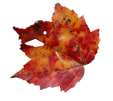








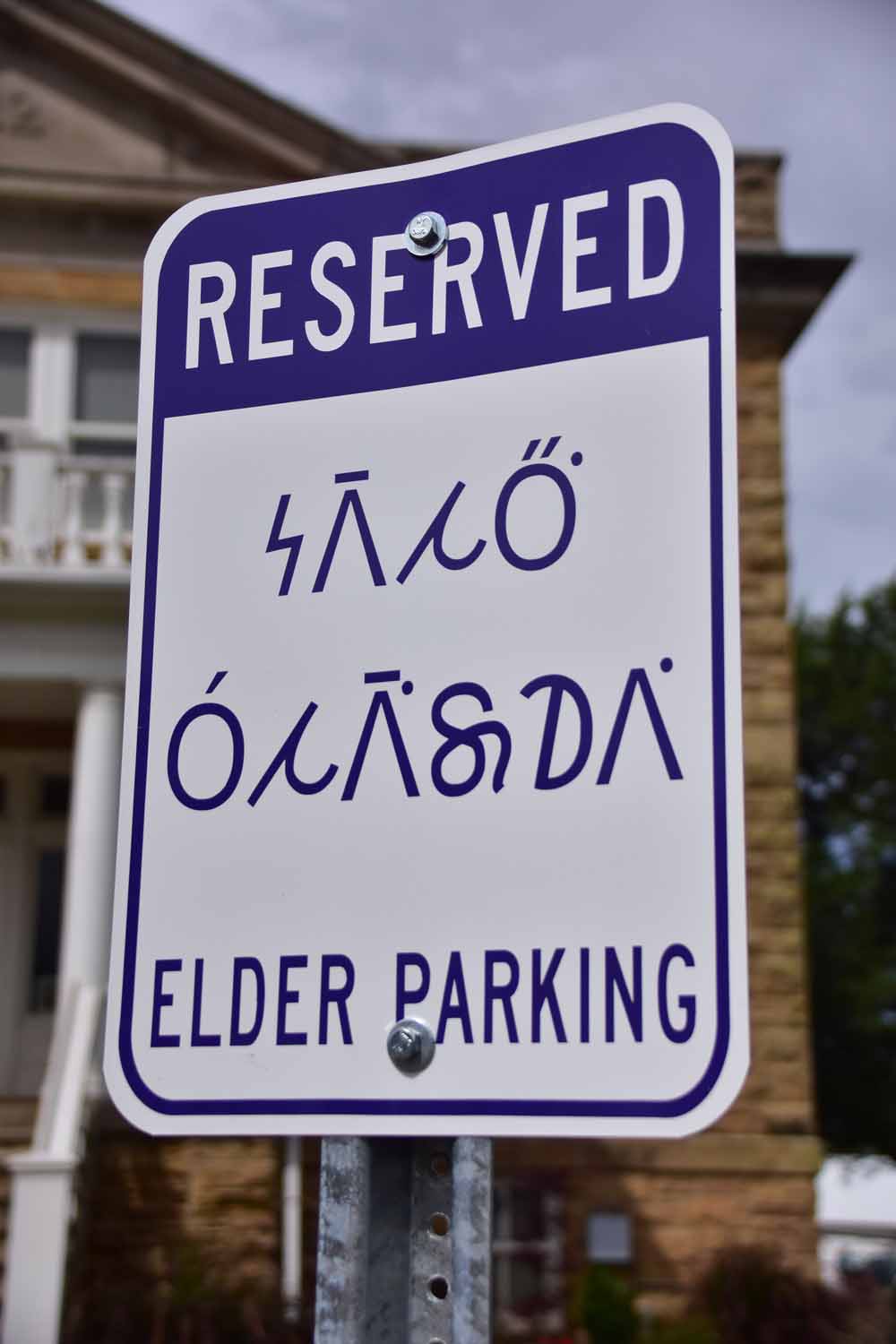





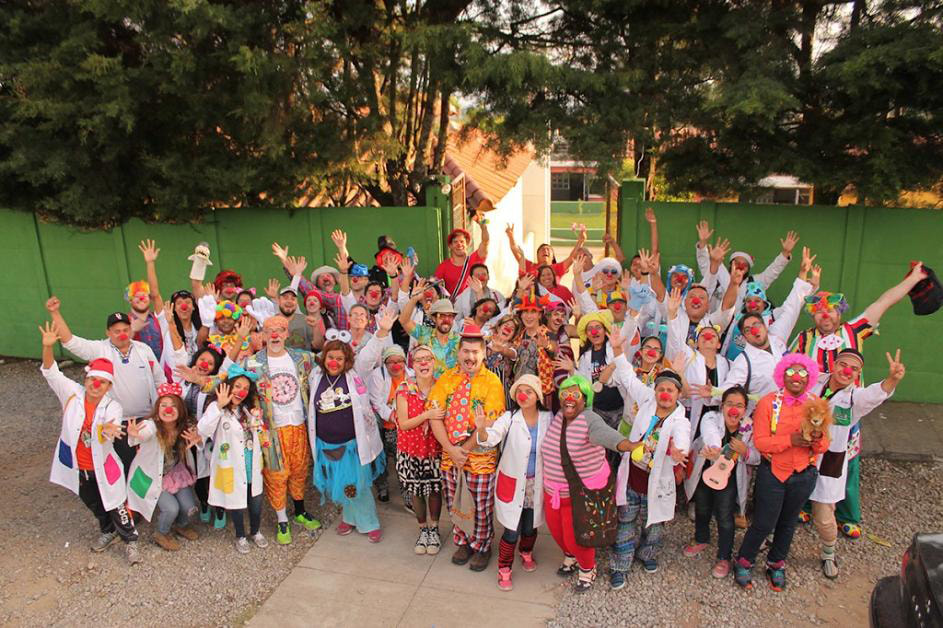







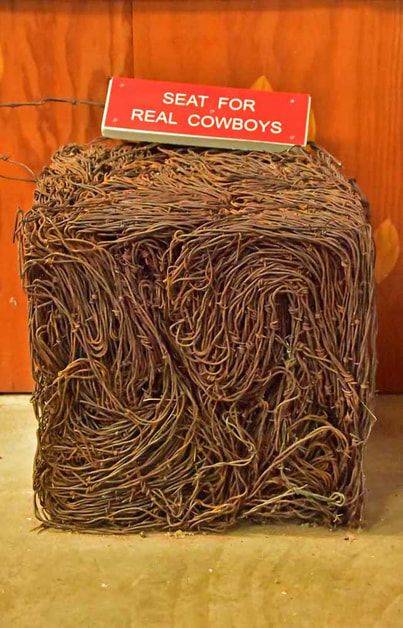



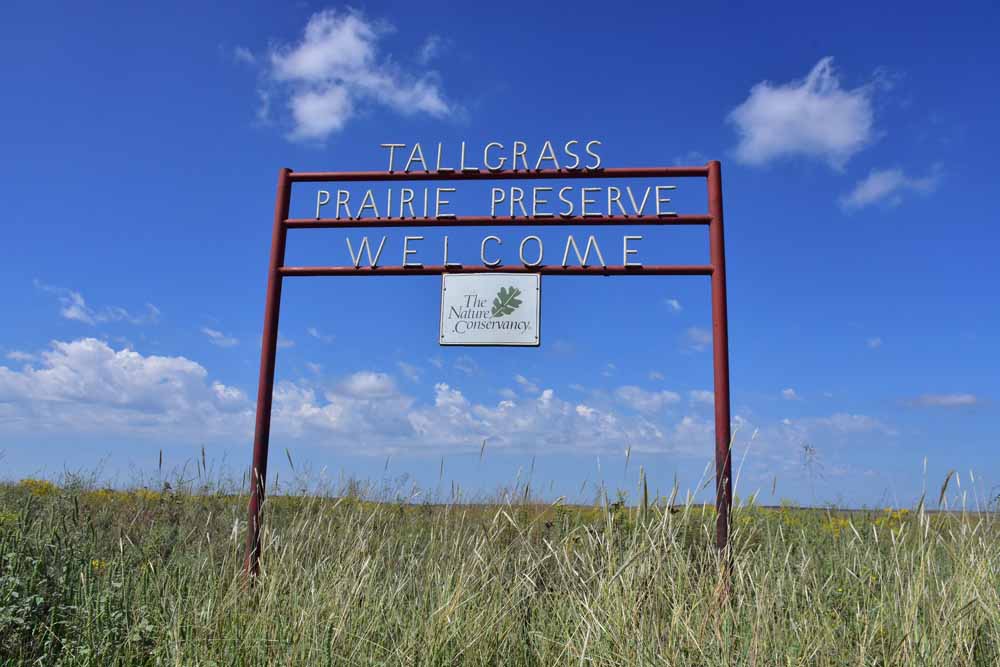







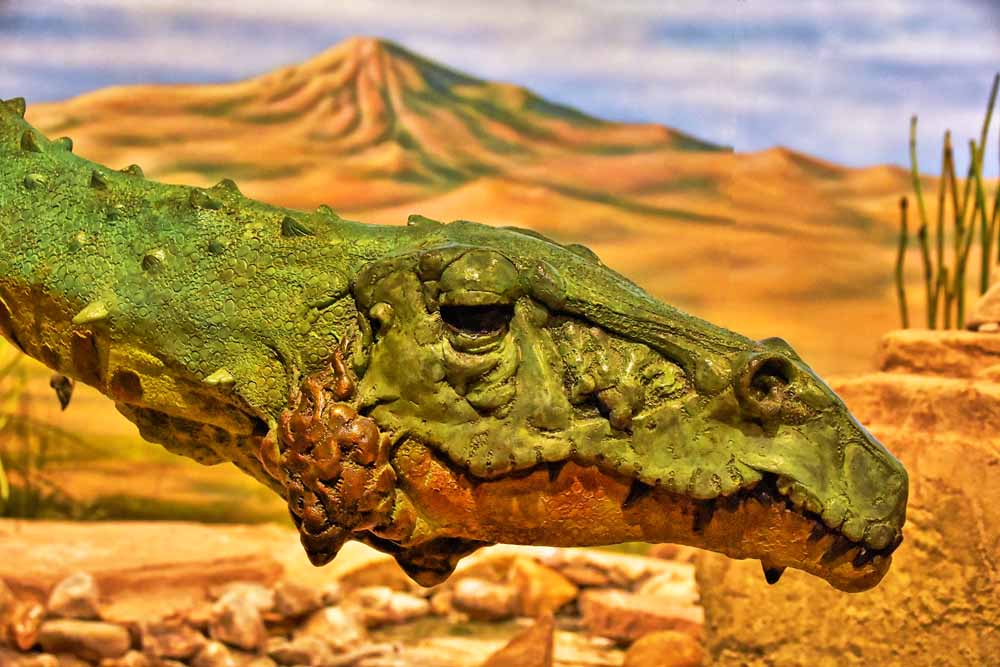
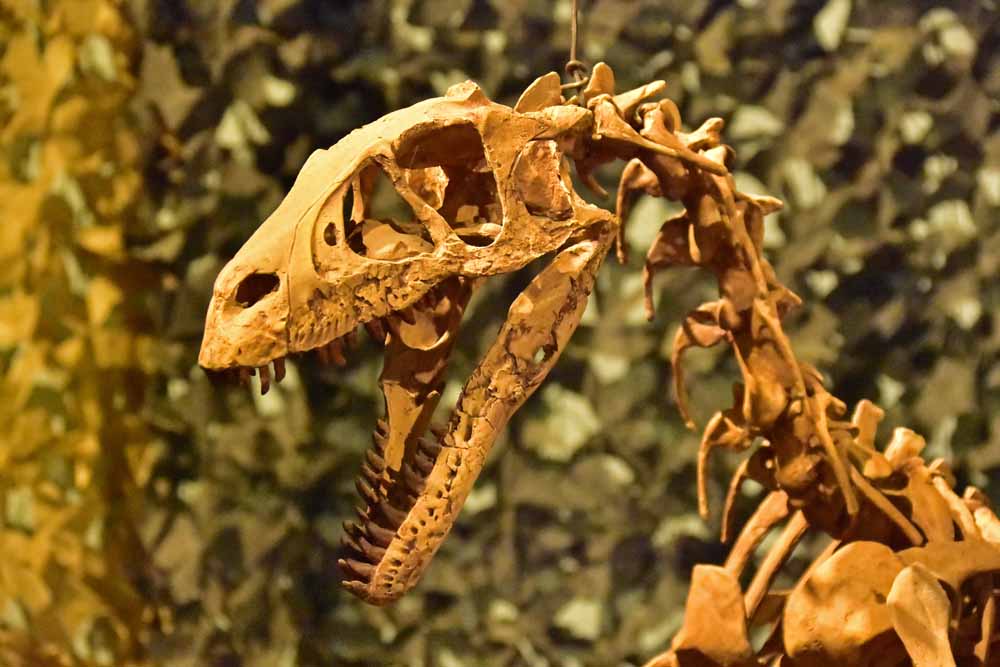



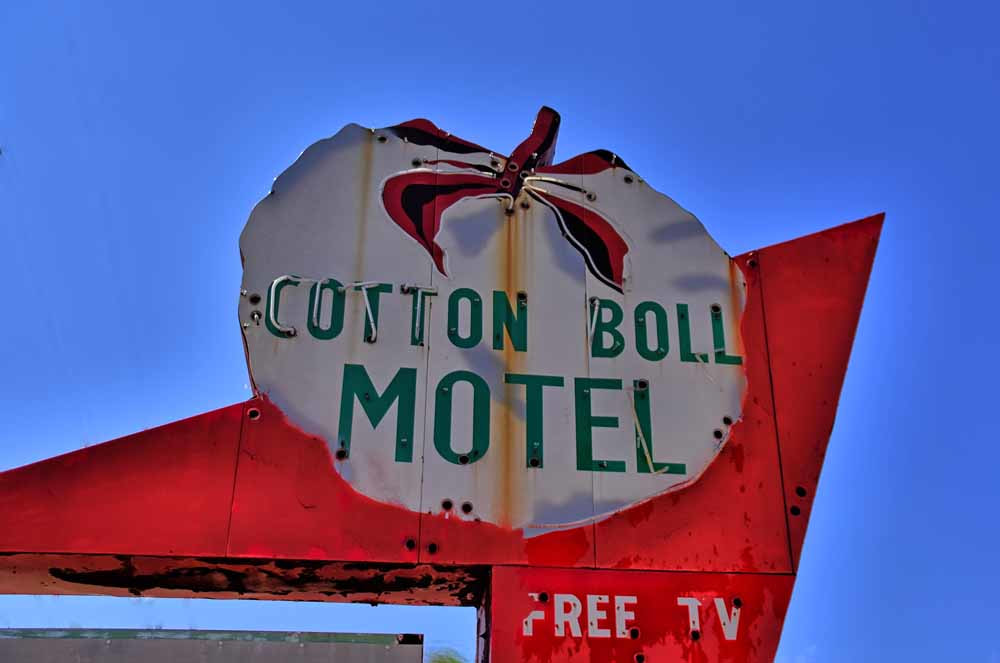


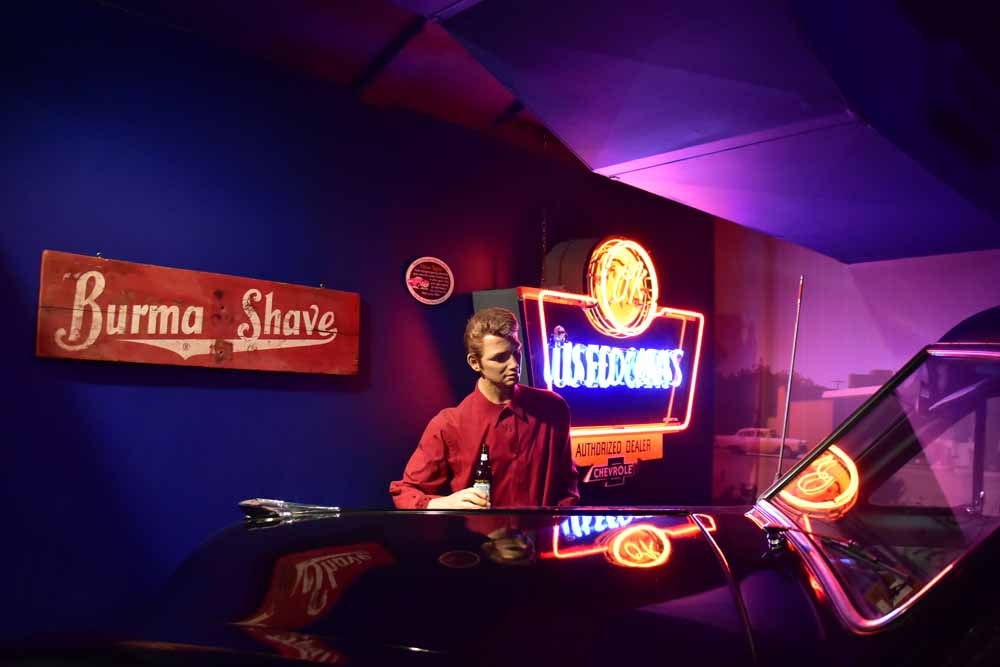










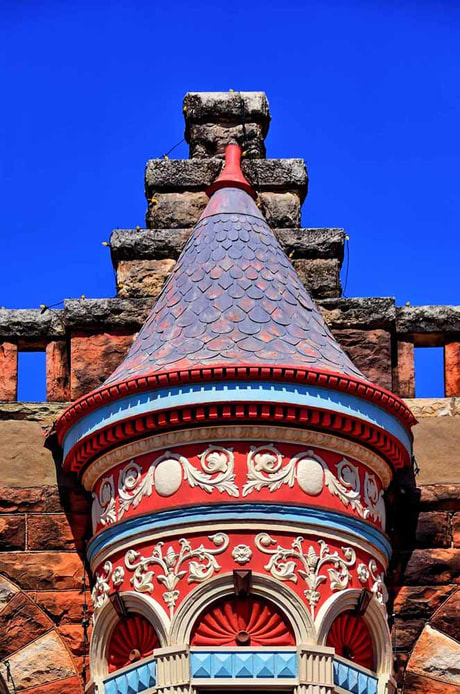


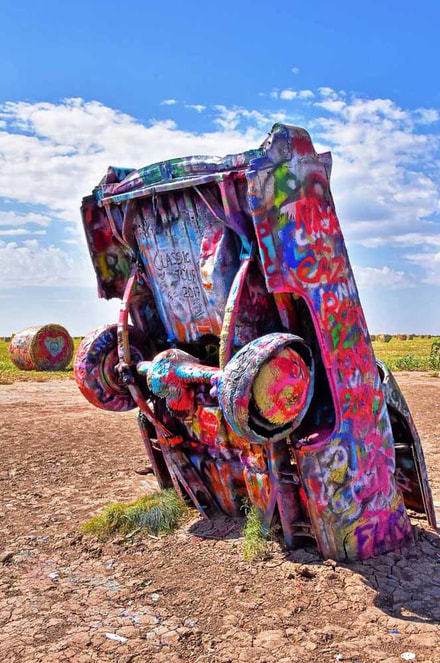



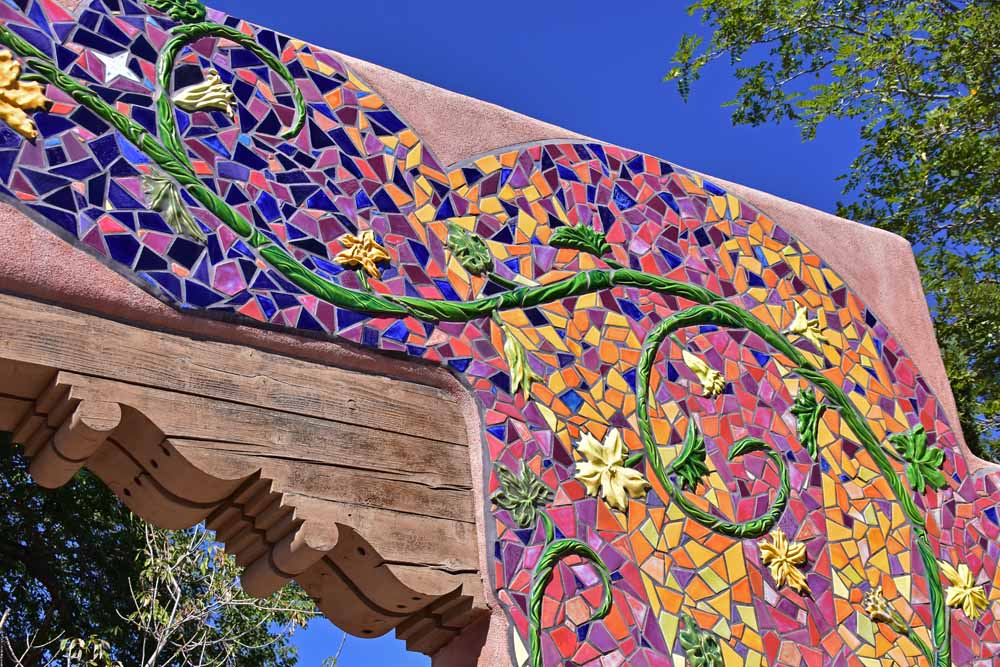


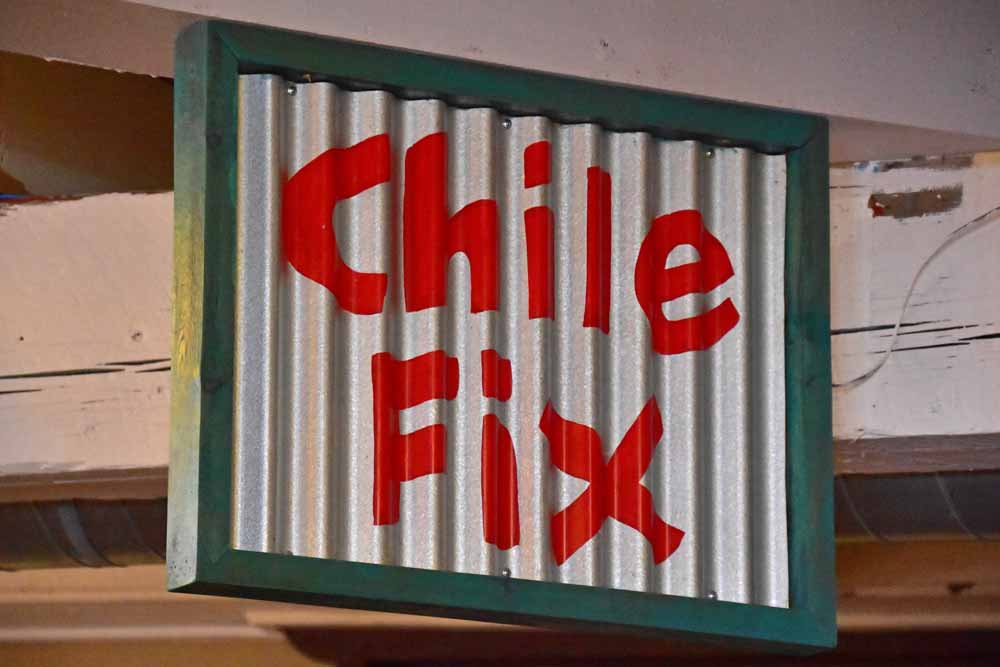
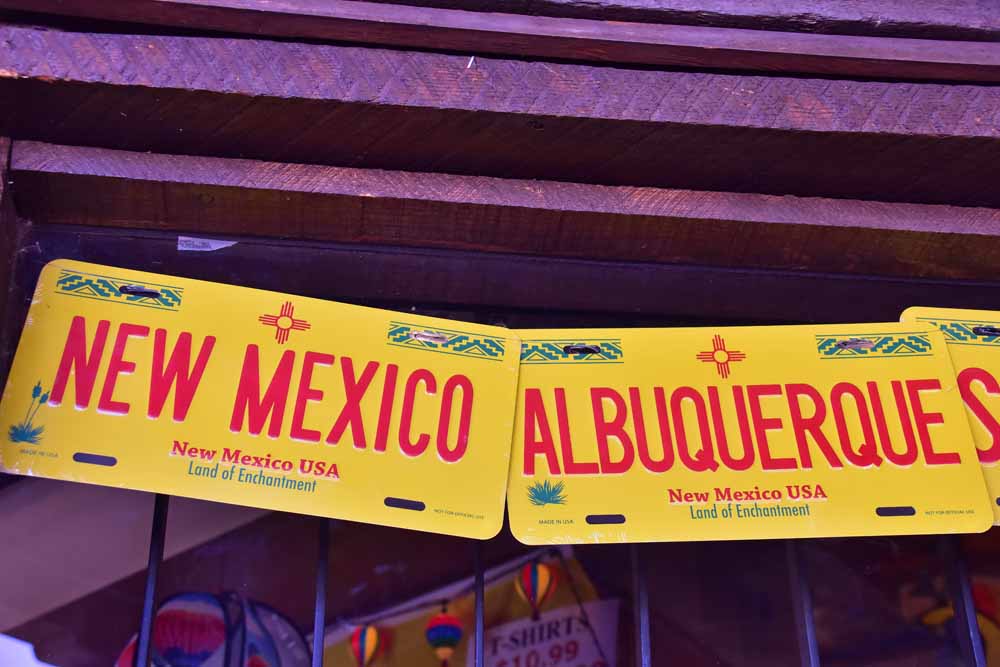




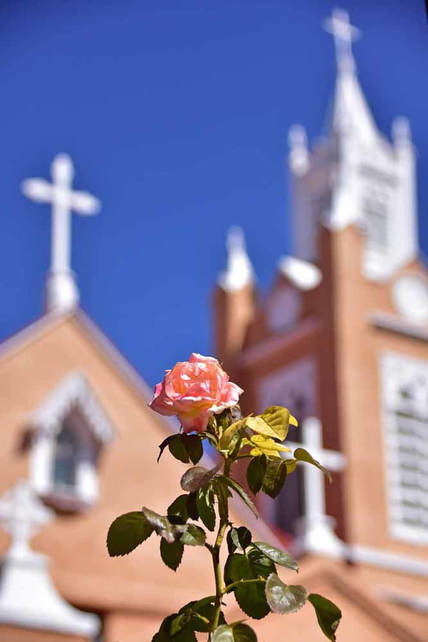
















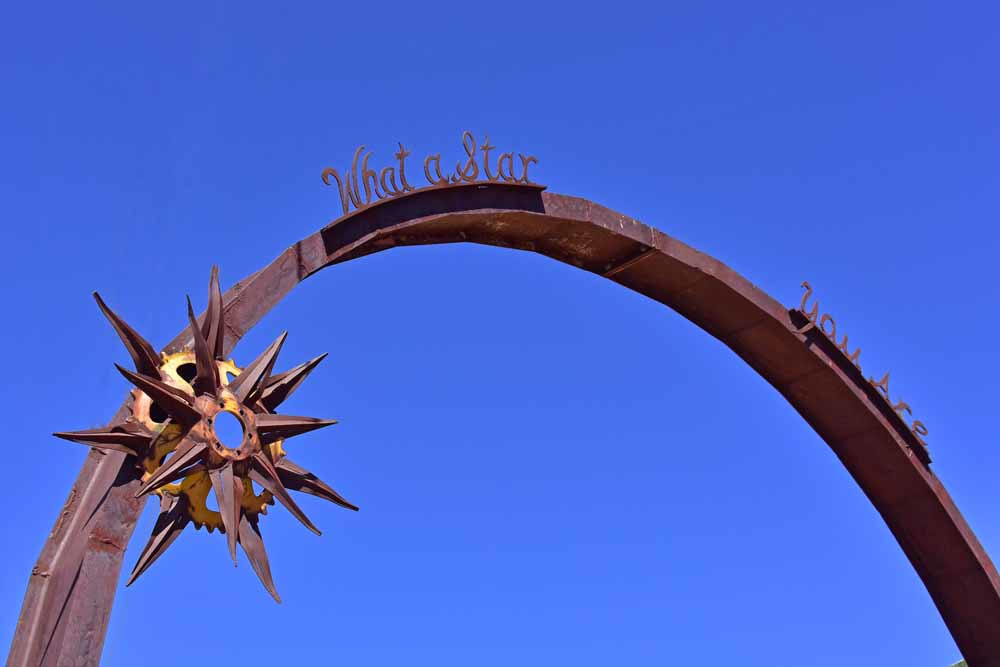

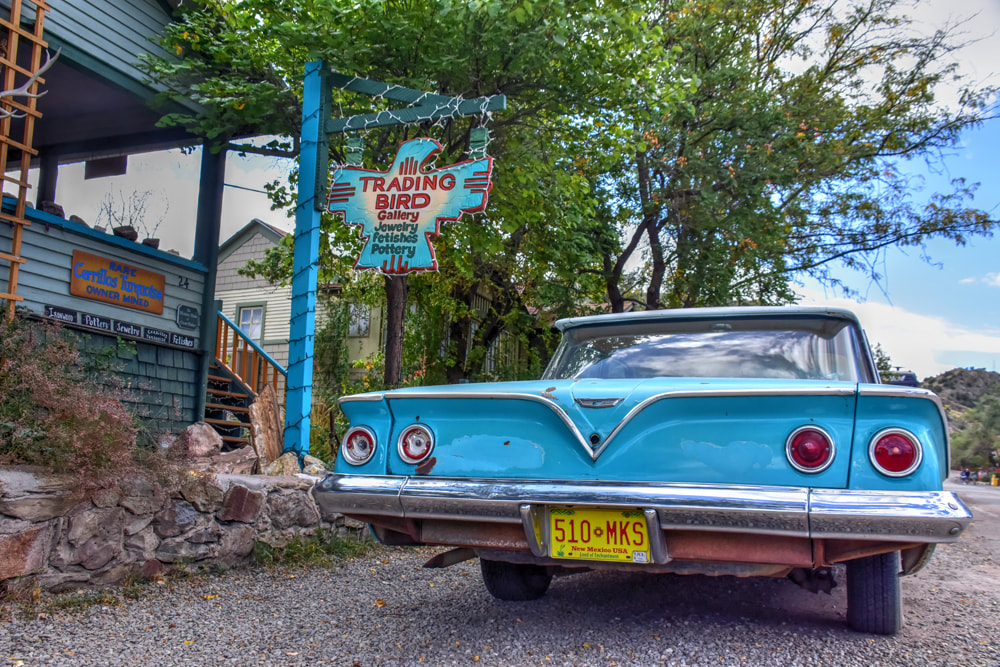









 RSS Feed
RSS Feed